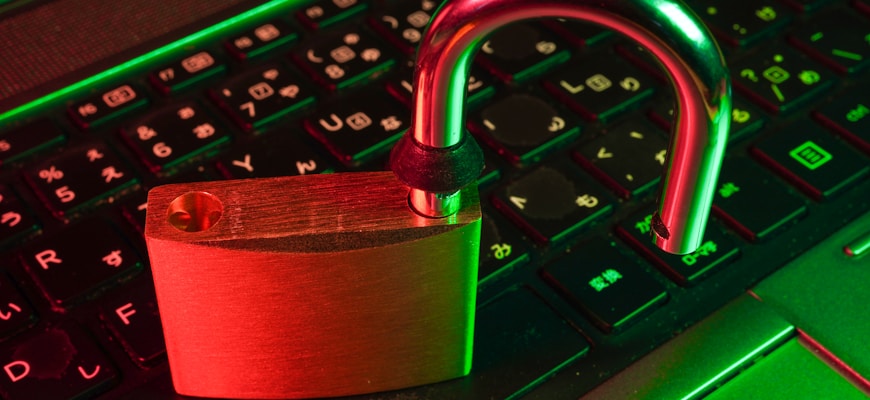Crypto Security Breaches: How Exchanges Are Strengthening Defenses

- The Growing Threat of Crypto Security Breaches
- Common Vulnerabilities in Cryptocurrency Exchanges
- Implementing Two-Factor Authentication for Enhanced Security
- Regulatory Measures to Safeguard Crypto Assets
- The Role of Cold Storage in Preventing Hacks
- Continuous Monitoring and Updates in Crypto Security Protocols
The Growing Threat of Crypto Security Breaches
With the rapid rise in popularity of cryptocurrencies, the threat of security breaches has also been growing significantly. Hackers are constantly finding new ways to exploit vulnerabilities in crypto exchanges and wallets, putting users’ funds at risk. These security breaches can result in millions of dollars worth of cryptocurrencies being stolen, causing financial losses and eroding trust in the industry.
One of the main reasons behind the increasing number of crypto security breaches is the lack of robust security measures in place. Many exchanges and wallets have been found to have inadequate security protocols, making them easy targets for hackers. As a result, users are becoming more cautious about where they store their digital assets, opting for exchanges that prioritize security and implement strong cybersecurity measures.
In response to this growing threat, crypto exchanges are now taking proactive steps to strengthen their defenses against potential security breaches. They are investing in cutting-edge technologies such as advanced encryption, multi-factor authentication, and biometric security features to better protect users’ funds. Additionally, many exchanges are conducting regular security audits and penetration testing to identify and address any vulnerabilities before hackers can exploit them.
By prioritizing security and implementing robust defenses, crypto exchanges are working to enhance the safety and security of their platforms. This not only helps protect users’ funds but also boosts confidence in the overall security of the cryptocurrency industry. As the threat of security breaches continues to evolve, it is crucial for exchanges to stay one step ahead by continuously improving their security measures and staying vigilant against potential threats.
Common Vulnerabilities in Cryptocurrency Exchanges
Cryptocurrency exchanges are prone to various vulnerabilities that can compromise the security of users’ funds and personal information. Some of the most common vulnerabilities in crypto exchanges include:
1. **Phishing Attacks**: Phishing attacks involve tricking users into revealing their login credentials and other sensitive information through fake websites and emails. This type of attack is prevalent in the cryptocurrency industry due to the irreversible nature of transactions.
2. **Insufficient Security Measures**: Some exchanges do not implement robust security measures to protect against cyber threats. This can leave them vulnerable to hacking attempts and data breaches.
3. **Weak Password Policies**: Weak password policies, such as allowing users to create easily guessable passwords, can make it easier for attackers to gain unauthorized access to accounts.
4. **Lack of Two-Factor Authentication**: Two-factor authentication adds an extra layer of security by requiring users to provide two forms of verification before accessing their accounts. Exchanges that do not offer this feature are more susceptible to unauthorized access.
5. **Outdated Software**: Using outdated software and not regularly updating security patches can leave exchanges open to known vulnerabilities that hackers can exploit.
To mitigate these vulnerabilities, cryptocurrency exchanges are continually improving their security defenses. By implementing measures such as multi-signature wallets, cold storage solutions, and regular security audits, exchanges can enhance the protection of users’ assets and data. It is crucial for users to choose exchanges that prioritize security to safeguard their investments in the volatile cryptocurrency market.
Implementing Two-Factor Authentication for Enhanced Security
One effective way that exchanges are enhancing security measures is by implementing two-factor authentication (2FA). This additional layer of security requires users to provide two different forms of identification before accessing their accounts, making it more difficult for unauthorized individuals to gain access. By requiring both a password and a secondary authentication method, such as a fingerprint scan or a unique code sent to a mobile device, exchanges can significantly reduce the risk of unauthorized access.
Regulatory Measures to Safeguard Crypto Assets
Regulatory measures play a crucial role in safeguarding crypto assets against security breaches. Exchanges are increasingly subject to stringent regulations to ensure the protection of digital currencies. These measures are designed to enhance transparency, accountability, and overall security in the crypto space.
One of the key regulatory measures is the implementation of Know Your Customer (KYC) and Anti-Money Laundering (AML) procedures. Exchanges are required to verify the identity of their users and monitor transactions to detect and prevent suspicious activities. By enforcing KYC and AML regulations, exchanges can mitigate the risk of unauthorized access and fraudulent transactions.
Additionally, regulatory authorities are working to establish comprehensive guidelines for the storage and management of crypto assets. Exchanges are required to adhere to strict security protocols to protect digital assets from theft and cyber attacks. By following these guidelines, exchanges can create a secure environment for trading and storing cryptocurrencies.
Furthermore, regulatory measures include the enforcement of cybersecurity standards to prevent hacking incidents and data breaches. Exchanges are investing in advanced security technologies and protocols to strengthen their defenses against cyber threats. By prioritizing cybersecurity, exchanges can safeguard their platforms and users from potential security risks.
In conclusion, regulatory measures are essential for enhancing the security of crypto assets and protecting users from security breaches. Exchanges must comply with regulations and implement robust security measures to ensure the safety and integrity of digital currencies. By working together with regulatory authorities, exchanges can create a more secure and trustworthy environment for trading cryptocurrencies.
The Role of Cold Storage in Preventing Hacks
Cold storage is a crucial component in safeguarding cryptocurrencies from potential hacks. By keeping digital assets offline, away from internet-connected devices, exchanges can significantly reduce the risk of unauthorized access and theft. This offline storage method provides an added layer of security, making it more challenging for hackers to infiltrate and compromise sensitive information.
Many exchanges have started implementing cold storage solutions to protect their users’ funds. These cold wallets are typically stored in secure locations, such as vaults or safety deposit boxes, making them less susceptible to cyberattacks. By diversifying storage methods and incorporating cold wallets into their security protocols, exchanges can better defend against potential breaches and mitigate the impact of any security vulnerabilities.
In addition to cold storage, exchanges are also enhancing their security measures through multi-signature technology, encryption, and regular security audits. By combining these strategies, exchanges can create a more robust defense system that minimizes the risk of security breaches and ensures the safety of users’ assets. As the cryptocurrency landscape continues to evolve, exchanges must remain vigilant in implementing the latest security protocols to stay one step ahead of cyber threats.
Continuous Monitoring and Updates in Crypto Security Protocols
Continuous monitoring and updates are crucial in the realm of crypto security protocols. By regularly monitoring the latest trends in cyber threats and vulnerabilities, exchanges can proactively strengthen their defenses against potential breaches. This involves staying informed about emerging security risks and promptly implementing necessary updates to mitigate these risks.
One effective strategy is to employ automated monitoring tools that can detect suspicious activities in real-time and alert security teams for immediate action. Additionally, conducting regular security audits and penetration testing can help identify weaknesses in the existing security infrastructure and address them before they are exploited by malicious actors.
Furthermore, staying abreast of the latest developments in encryption technologies and best practices is essential for maintaining a robust security posture. This includes adopting industry-standard encryption algorithms, implementing multi-factor authentication, and ensuring secure key management practices. By continuously updating their security protocols in response to evolving threats, exchanges can stay one step ahead of cybercriminals and safeguard their users’ assets.
In conclusion, continuous monitoring and updates play a critical role in enhancing crypto security protocols and protecting exchanges from potential breaches. By remaining vigilant, proactive, and adaptive in their approach to security, exchanges can effectively mitigate risks and ensure the safety of their users’ funds.



